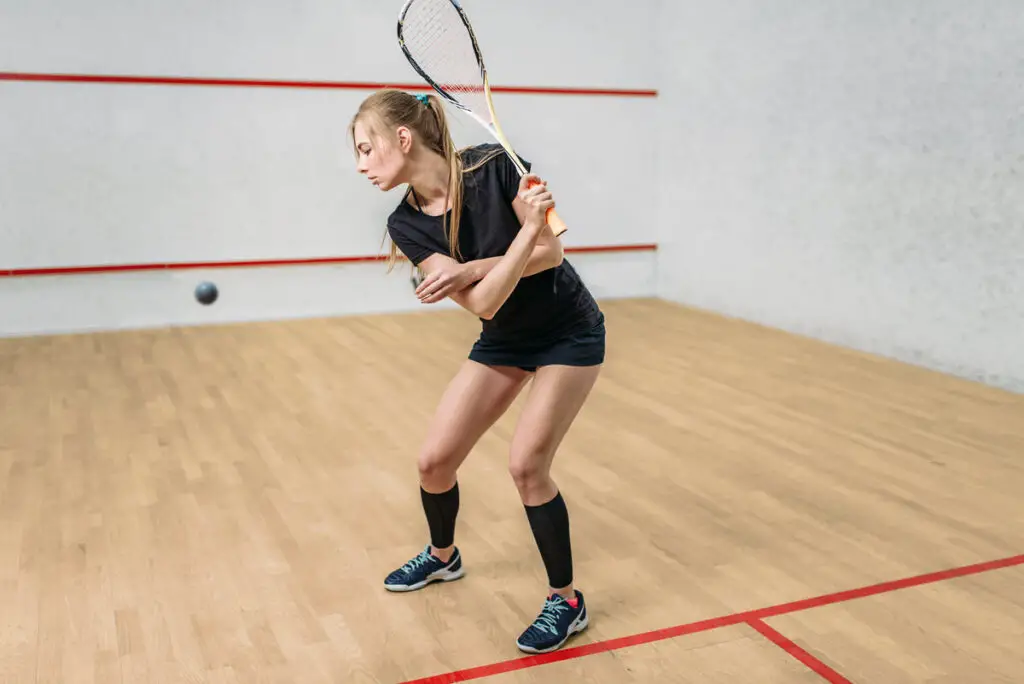When I started playing squash, I occasionally heard the term downswing (I’m not 100% sure if that should be written as down swing as two words, but I’m going to write it as one here!) used by a few opponents who were helping me to learn the game. It wasn’t something instructors had used when I went to a few organized practice lessons, so I didn’t give it a lot of thought.
Recently, the term came up again, and I thought I’d do a little research to see whether there was a set definition for a downswing. Here’s what I found out.
The term downswing in squash simply refers to the motion of playing the shot with the racket starting high and being driven down through the swing to play the ball. As this is a fairly common motion for many squash shots, it’s not a term that’s commonly used by squash players.

As the squash downswing is used by the majority of players in an informal sense rather than to describe a specific action like a backhand or forehand swing, it does mean it’s often used by different people to mean different things. Fortunately, there are commonalities between uses, so let’s take a look at what meaning you should be able to take from use of the term.
Generally, people refer to a stroke of the ball with the terminology ‘downswing’ when they’re either striking the ball low to the ground or giving it a downward trajectory. This will often coincide with the ball being played close to a wall, and probably parallel to the wall rather than cross court. It doesn’t mean that you can’t use a downswing cross court, just that they’re more commonly played to keep the ball close to the side wall.
The reason it’s a good shot choice is that keeping the ball low and near to walls increases the difficulty for your opponent to play their next shot, meaning that even if they successfully play the ball, your own next shot is more likely to be within reach, and hopefully higher off the ground. In other words, strategic use of shot selection to include a downswing from time to time helps you to retain control of the point, or wrestle the momentum away from your opponent.
You’ll almost certainly have heard the phrase ‘Control The T’ in relation to playing squash – referring to keeping control over the game. The ‘T’ is the center of the court, and the area where the player who is holding control of the point is most likely to be located between points. If you can force your opponent to spend more time away from the T, it opens up more opportunities for you to hit a shot that’s a winner that they can’t get to in time.
Mastering a wide selection of shots is something that takes a long time for any player to build up, but the more you practice, the more instinctive they become. Use of a strong and controlled backswing is one element of a comprehensive set of shots to have in your repertoire as you grow into a formidable player and opponent!